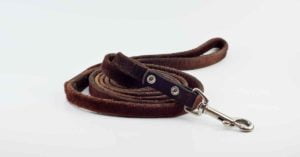Welcome to our step-by-step guide on training your Rottweiler to walk on a leash. Walking on a leash is an essential skill for every dog, and proper leash training can make your daily walks enjoyable and stress-free. In this comprehensive guide, we will provide you with effective techniques, tips, and strategies to ensure successful Rottweiler leash training. Let’s get started!
Contents
- 1 Importance of Leash Training
- 2 The Step-by-Step Guide to Rottweiler Leash Training
- 3 1 – Introducing the Leash and Collar
- 4 2 – Getting Familiar with Leash Pressure
- 5 3 – Loose Leash Walking
- 6 4 – Distraction Training
- 7 5 – Advanced Leash Training
- 8 Common Challenges in Rottweiler Leash Training
- 9 1 – Pulling on the Leash
- 10 2 – Reactivity toward Other Dogs
- 11 3 – Fear or Anxiety on Walks
- 12 Additional Tips for Leash Training Success
- 13 FAQs
- 14 Q1: How long does it take to leash train a Rottweiler?
- 15 Q2: Can I use a retractable leash for Rottweiler leash training?
- 16 Q3: Should I punish my Rottweiler for leash pulling?
- 17 Q4: Can I leash-train an older Rottweiler?
- 18 Q5: Should I hire a professional dog trainer for leash training my Rottweiler?
- 19 Conclusion
Importance of Leash Training
 Leash training is crucial for both the safety of your Rottweiler and the people around you. A well-trained dog that walks calmly on a leash is less likely to pull, lunge, or become aggressive during walks. Additionally, leash training promotes better communication and strengthens the bond between you and your Rottweiler.
Leash training is crucial for both the safety of your Rottweiler and the people around you. A well-trained dog that walks calmly on a leash is less likely to pull, lunge, or become aggressive during walks. Additionally, leash training promotes better communication and strengthens the bond between you and your Rottweiler.
The Step-by-Step Guide to Rottweiler Leash Training
Teaching your Rottweiler to walk on a leash requires patience, consistency, and positive reinforcement. Follow these steps to ensure a successful leash training journey.
1 – Introducing the Leash and Collar
Before you start leash training, it’s essential to introduce your Rottweiler to the leash and collar in a positive and gradual manner. Here’s how you can do it:
- Start by allowing your Rottweiler to sniff and investigate the leash and collar.
- Gently attach the collar to your Rottweiler’s neck while offering treats and praise.
- Once your Rottweiler is comfortable with the collar, introduce the leash by attaching it to the collar for short periods of time.
2 – Getting Familiar with Leash Pressure
In this step, you will help your Rottweiler understand the concept of leash pressure and how to respond to it appropriately. Follow these guidelines:
- Begin walking with your Rottweiler in a quiet and familiar environment.
- Hold the leash with a relaxed grip and allow some slack.
- Encourage your Rottweiler to move forward by using verbal cues and gentle leash pressure.
- Reward your Rottweiler for any forward movement and positive responses to leash pressure.
3 – Loose Leash Walking
Once your Rottweiler understands leash pressure, it’s time to work on loose leash walking. Here’s how you can achieve this:
- Begin walking with your Rottweiler on a loose leash.
- Whenever your Rottweiler starts to pull, immediately stop walking and stand still.
- As soon as the leash loosens and there is no tension, resume walking.
- Reward your Rottweiler for walking calmly on a loose leash and provide treats and praise.
4 – Distraction Training
In this step, you will train your Rottweiler to remain focused and calm despite various distractions during walks. Follow these tips:
- Gradually introduce distractions such as other dogs, people, or noises.
- Use positive reinforcement techniques to redirect your Rottweiler’s attention back to you.
- Practice walking in different environments to generalize your Rottweiler’s leash training skills.
5 – Advanced Leash Training
Once your Rottweiler has mastered the basics, you can move on to more advanced leash training exercises, such as:
- Teaching your Rottweiler to walk politely past other dogs without pulling or reacting.
- Practicing leash walking in busy areas or during busier times of the day.
- Introducing turns, stops, and changes in pace during walks to further challenge your Rottweiler’s leash skills.
Common Challenges in Rottweiler Leash Training
While leash training your Rottweiler, you may encounter some common challenges. Here are a few and how to address them:
1 – Pulling on the Leash
If your Rottweiler tends to pull on the leash, try the following techniques:
- Stop and stand still whenever your Rottweiler pulls, waiting for them to come back to your side.
- Use treats and praise to reward your Rottweiler for walking beside you without pulling.
- Consider using a front-clip harness or a head halter to discourage pulling.
2 – Reactivity toward Other Dogs
If your Rottweiler becomes reactive or aggressive towards other dogs during walks, follow these steps:
- Maintain a safe distance from other dogs to prevent triggering your Rottweiler’s reactivity.
- Divert your Rottweiler’s attention away from other dogs using treats, toys, or obedience commands.
- Consult a professional dog trainer or behaviorist for specialized assistance if needed.
3 – Fear or Anxiety on Walks
If your Rottweiler shows fear or anxiety during walks, try these strategies:
- Gradually desensitize your Rottweiler to the triggers causing fear by exposing them to low-level stimuli and rewarding calm behavior.
- Create positive associations by offering treats, praise, and playtime during walks.
- Use calming techniques such as deep breathing exercises or engaging your Rottweiler in obedience commands to redirect their focus.
Additional Tips for Leash Training Success
- Use high-value treats as rewards during training sessions to keep your Rottweiler motivated.
- Keep training sessions short and enjoyable to maintain your dog’s interest and focus.
- Stay patient and persistent. Leash training takes time and practice, but the results are worth it.
- Consider using a front-clip harness or a head halter if your Rottweiler continues to pull on the leash.
- Seek professional help from a certified dog trainer if you encounter persistent challenges or behavioral issues.
FAQs
Q1: How long does it take to leash train a Rottweiler?
The time it takes to leash train a Rottweiler can vary depending on their individual temperament and previous experiences. It may take a few weeks to several months of consistent training to achieve desired results.
Q2: Can I use a retractable leash for Rottweiler leash training?
It is generally recommended to avoid using retractable leashes for leash training, as they can encourage pulling and lack control. A standard leash of appropriate length is preferable for better training outcomes.
Q3: Should I punish my Rottweiler for leash pulling?
No, punishment is not recommended in leash training. Positive reinforcement techniques, such as rewards and praise, are more effective in encouraging desired behavior and building a strong bond with your Rottweiler.
Q4: Can I leash-train an older Rottweiler?
Yes, leash training is possible for older Rottweilers. While it may require more patience and consistency, the same principles of positive reinforcement and gradual training can be applied.
Q5: Should I hire a professional dog trainer for leash training my Rottweiler?
If you are facing significant challenges or struggling with leash training, consulting a professional dog trainer or behaviorist can provide valuable guidance and support tailored to your Rottweiler’s specific needs.
Conclusion
Leash training your Rottweiler is a gradual process that requires patience, consistency, and positive reinforcement. By following the step-by-step guide provided, addressing common challenges, and adapting to your Rottweiler’s individual needs, you can achieve successful leash training results. Remember to always prioritize your Rottweiler’s safety and well-being during the training process.
Meet the Author Mehmood Shah,
As an owner of Rottweiler for 10 years, I motivate and encourage people about this lovely breed.
We’re dedicated to providing you the detailed researched articles about Rottweiler, with an emphasis on Rottweiler Health, Training, and Exercises.
I started my journey with Rottweiler Time in 2021 and it has come a long way from its beginnings.
Thanks for Your Support.


